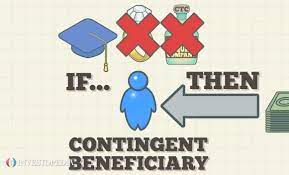The government frequently uses earned income credit (EIC) to improve the financial stability of low-income working families, particularly those with children. Filers with lower incomes can keep more of their money thanks to lower personal income tax rates. The income bracket, marital status, and the number of qualifying children are the primary factors in calculating the tax credit amount. For those who qualify, the EIC can reduce or eliminate their federal tax liability. The most important condition is that you have a source of income. We will be shedding more light on how the Earned Income Credit works in 2023 and how to calculate it using the EIC calculator.
What is an Earned Income Credit?
The Earned Income Credit (EIC) is a refundable tax credit for low and middle-income workers that reduces their tax liability on income earned. People who are eligible for EIC will receive a refund if their credit is greater than their tax liability. The size of your family, your filing status, and your yearly income all play a role in determining whether or not you qualify for the tax credit.
In 2021, the earned income credit sometimes called earned income tax credit can be anywhere from $1,502 to $6,728 depending on your filing status, income, and the number of children you support. The earned income credit price points in 2022 will be about $560 and $6,935. And those without kids are also eligible.
If you’re lucky to qualify, don’t forget to include the credit on your tax return. The IRS recommends amending tax returns from the previous three years if you believe you are eligible for the EITC but did not claim it when you originally filed.
As part of its $1.9 trillion American Rescue Plan, Congress made adjustments to the EIC. The measure relaxes several EIC rules beginning with 2021 tax returns, allowing more taxpayers who do not have children to qualify for a larger EIC.
How Does the Earned Income Credit Work in 2023?
How the Earned Income Credit policy work in 2023 is briefly outlined below for a quick and easy grasp;
- Depending on your filing status and the number of children you support, the earned income credit for the tax year 2021 (the return you’ll file in 2023) can be anywhere from $1,502 to $6,728.
- If your expected earnings for 2019 are higher than your expected earnings for 2021, you can use the larger amount to determine your EITC.
- The EIC is available to everybody, regardless of whether or not they have children.
- The earned income tax credit (EITC) does more than just reduce your tax bill; it may even result in a refund that exceeds the amount of taxes you paid.
- For tax returns that include an EIC claim, the IRS is legally prohibited from issuing payments until mid-February.
What Makes You Eligible for the Earned Income Credit?
You must have a low or moderate income and a qualifying child or children to claim the EITC. For the 2021 tax year, this benefit will be available to U.S. residents who are at least 19 years old and who are single or who are submitting a joint return with their spouse and no qualifying dependents.
Children under 19, full-time students under 24, and dependents with disabilities are examples of dependents who will be eligible for assistance in 2021. A taxpayer’s filing status and the number of dependents determine the credit percentage, earnings cap, and credit amount. The income threshold at which the credit begins to taper out is likewise determined by these variables.
Although taxpayers must have earnings to qualify for the Earned Income Credit in 2022, any investment income above the threshold ($10,000 in 2021) will be disallowed. Eligible dependents must also meet age, relationship, and residency restrictions. When it comes to individual tax benefits, the EIC is among the most crucial benefit means.
Additionally, you must be a citizen or permanent resident alien for the whole year and have a valid Social Security number as of the due date of your tax return in order to claim the EITC in 2021.
Who Does Not Qualify for Earned Income Credit?
If you earn investment income that is greater than $10,000 in 2021, you will not be eligible for the 2022 earned income credit (EIC). The term “investment income” encompasses not only taxable interest but also tax-exempt interest and dividends of capital gains.
What is the Income Limit for Earned Income Credit (EIC)
Both the taxpayer’s earned income and their adjusted gross income (AGI) must fall below threshold levels before the taxpayer is eligible for the EITC. For the 2021 tax year, the table below illustrates the different upper restrictions on income, credit amount, and investment income that a single or married taxpayer may be subject to, depending on the number of qualified dependents in the home.
2021 Earned Income Tax Credit
(this is for taxes due in April 2022)
| Number of Children or Relatives | Earned Income Credit Limit | Max AGI, Single, Head of Household, Widowed, or Married filing separately | Maximum AGI, Married Filing Jointly |
| 0 | $1,502 | $21,430 | $27,380 |
| 1 | $3,618 | $42,158 | $48,108 |
| 2 | $5,980 | $47,915 | $53,865 |
| 3 | $6,728 | $51,464 | $57,414 |
Earned Income Credit 2022
(this is for taxes due in April 2023)
| Number of Children or Relatives | Earned Income Credit Limit | Max AGI, Single, Head of Household, Widowed, or Married filing separately | Maximum AGI, Married Filing Jointly |
| 0 | $560 | $16,480 | $22,610 |
| 1 | $3,733 | $43,492 | $49,622 |
| 2 | $6,164 | $49,399 | $55,529 |
| 3 | $6,935 | $53,057 | $59,187 |
As illustrated in the preceding table, an EIC of up to $1,502 may be available to a single filer in 2021 with no dependents and an AGI of less than $21,430. For comparison, a married couple filing jointly with two qualifying children can receive up to $6,728 in EIC in 2021 if the two earn a combined total of less than $53,865.
In addition, the IRS requires that your investment income for the year 2021 be less than $10,000 if you want to claim the EIC.
As of 2021, taxpayers who are married but filing separately and who meet the American Rescue Plan Act (ARPA )standards are eligible for this benefit. The credit is coordinated with the tax regulations of Puerto Rico, Guam, and American Samoa. There are also particular EITC rules for clergy and military personnel stationed overseas.
Wages, salaries, tips, and other forms of taxable compensation from your place of employment all fall under the category of “earned income.” Earnings are subtracted from other types of income to determine your adjusted gross income.
For the 2022 earned income credit, it is crucial to remember the following: In 2022, the earned income credit offered to those who do not have any children will be much lower. Though, the American Recovery and Reinvestment Act temporarily increased it from $543 to $1,502 in 2021. This increase, however, did not carry over to the 2022 tax year.
Is Earned Income Credit the Same as Claiming a Dependent?
The simple response to this is negative. The child tax credit is basically the credit for having children under the age of 17 who are dependent. The Earned Income Credit (EIC) on the other hand is a credit that is available to certain taxpayers with lower incomes, regardless of whether or not they have children.
However, if you are qualified, you can as well be able to submit and claim both credits.
Can you get EIC with no income?
In order to be eligible for the 2022 Earned Income Credit, you will need to have some form of earned income in 2021. It is not possible to qualify if your income comes from sources such as interest, the sale of investments, pensions, or unemployment.
In another development, you can count your battle pay as taxable income if you are a member of the armed forces and get nontaxable pay for your service. This will affect the amount of EIC you receive anyways.
Can I file Taxes if I Didn’t Have a Child?
If you don’t have a kid who would otherwise qualify for the EITC but you meet the income requirements for your filing status, you may be eligible for this tax credit. However, there are three additional requirements for eligibility that you will have to meet:
- For this to work, you need to prove that you’ve spent at least six months of the year living in the USA.
- There is no one who can list you as a dependant or tax-free child on their return.
- To file a tax return for the 2021 tax year (due in April 2022), you must be at least 24 years old if you were a full-time student for at least five months of the year. You must be 18 years old if you spent any time in foster care after turning 14. Or 19 years old if you were homeless at any point during the year. As of the year 2021, there is no upper age limit attached to the credit either.
Can I file Taxes if I Didn’t Work but Have a Child?
The so-called “free money” that many obtain for merely declaring children on their tax returns is actually earned income (wages or self-employment). They are ineligible for the “refundable” EIC or the Additional Child Tax Credit because they do not have any earned income. The amount of either credit depends on how much money you bring in. No earned income equals no “refund”. If your earned income is low, your refund will also be low. In order to qualify for the child tax credit, you must have accumulated an income of at least $2,500. And for the EIC, you must have at least $1,502 as earned income.
Can I Get a Taxes Refund if I Didn’t Work?
As long as you have earned income and satisfy all of the other EIC requirements, you may still be eligible for the EIC.
You can still apply for the EIC even if you are currently unemployed, not working, and/or do not fulfill the minimum filing requirements. In order to receive the EIC credit, you must file a tax return and qualify for EIC status.
Earned Income Credit Calculator?
The earned income credit calculator is a tool that automatically calculates whether or not you qualify for the Earned Income Tax Credit. It is an IRS-provided resource( EIC Calculator or Assistant) designed for Earned Income Credit filers that can help you determine;
- Your EIC eligibility status.
- If you can claim a kid or children if you match the requirements.
- Calculate what you think your credit will be.
To assess your eligibility, the amount, and whether or not your child(ren) meets the test for a qualifying child(ren), the Earned Income Credit Assistant or Calculator will guide you through a series of questions. The breakdown is as follows:
- Filling status
- Number of the qualifying child
- Eligibility
- Income
- Adjusted gross income
- Calculator
- Outcome/Results
In each part, you’ll answer a series of questions that will help the IRS determine your potential deductions and credits.
Conclusion
The Earned Income Credit (EIC), is also known as the Earned Income Tax Credit (EITC). It is a form of beneficial credit for low-income taxpayers who work and have earned income of a specific amount.
In 2021, the EIC can be anywhere from $1,502 to $6,728 depending on your filing status, income, and the number of children you support. While earned income credit price points for 2022 will be about $560 and $6,935.
Don’t forget to include the credit on your tax return if you qualify for it. The IRS recommends amending tax returns from the previous three years if you believe you are eligible for the EIC but did not claim it when you originally filed.
EIC FAQs
How is your earned income credit determined?
Whether or not you qualify for a larger credit is determined by your yearly income, family size, and marital status. As of 2021, the credit limit is up to $6,728. The credit amount increases up to a maximum and then decreases over time as income increases. Additionally, the number of children in a family can result in a larger tax benefit.
Do you calculate EITC based AGI or gross income?
To be eligible for the EIC, both your earned income and your adjusted gross income (AGI) must be below the applicable threshold. Using the EIC calculator, earned income credit is subtracted from your AGI, along with specific adjustments for tax-free income like IRA contributions, to get your AGI.
If I get Social Security, am I eligible for earned income credit?
That is the case if you fall under the parameters of the EITC. Your EIC eligibility is unaffected by whether or not you receive Social Security or SSI.
Related Articles
- WHAT IS NET INCOME? Formula and How to Calculate It
- ANNUAL INCOME: Definition and Calculations of Gross, Net & Total Annual Income
- TAX LIABILITY: Definition and How It Works
- How To Set Up A Trust Fund: Step-by-step Guide
- BONUS DEPRECIATION: Definition, Example, and Rate For 2023






